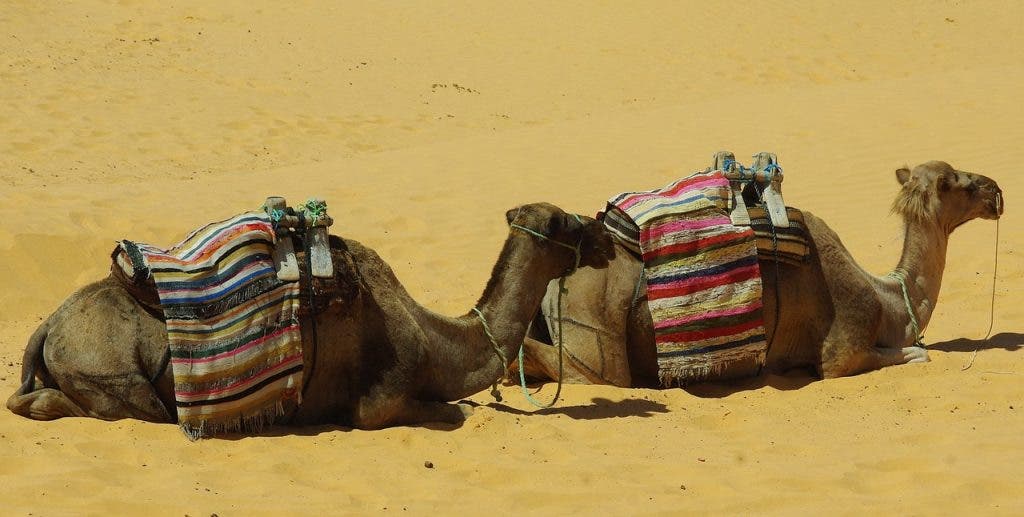Known as the “ship of the desert”, the dromedary camel is one of the largest domestic ungulates and one of the most recent additions to livestock. For 3,000 years, the dromedary camel has been the burden animal of choice for transporting goods across the deserts of North Africa and the Arabian Peninsula, and all of this back and forth has left a permanent mark on their genetic makeup.

Nottingham University researchers analyzed genetic samples from 1,083 living dromedaries from 21 countries around the world. They then compared them with the DNA sequences from bone samples belonging to early-domesticated dromedaries from 400-1870 CE, as well as wild ones from 5,000-1,000 BCE.
The results published in Proceedings of the National Academy of Sciences suggest that thousands of years of trade connecting Arabia, the Near East, and North Africa have ‘blurred’ the genetic lines between dromedary camels from around the world.
“The genetic diversity we have discovered, thanks to restocking from wild ‘ghost’ dromedary populations, is quite remarkable in the history of its domestication,” says Faisal Almathen from the department of veterinary health and animal husbandry at King Faisal University in Saudi Arabia. “It underlines the animal’s potential to adapt sustainably to future challenges of expanding desert areas and global climate change.”
“Our analysis of this extensive dataset actually revealed that there is very little defined population structure in modern dromedaries,” says Olivier Hanotte, professor of genetics and conservation at the University of Nottingham, in a statement. “We believe this is a consequence of cross-continental back and forth movements along historic trading routes. Our results point to extensive gene flow which affects all regions except East Africa where dromedary populations have remained relatively isolated.”
Like other domesticated animals, the destiny of the dromedary camel has become interwoven with that of humans who have relied on them for basic transportation in some of the most arid and inhospitable places on Earth. Not even donkeys have proven as effective as dromedary camels.
Hannote says that people would travel for hundreds of miles with their camels to deliver goods where they were most needed. Upon arriving at the destination, the animals would have been exhausted, so to save time traders would often leave their camels there and swap them for fresh ones for the return journey.
In time, trade nodes turned into breeding grounds for camels coming from populations even thousands of miles away. This is why today a dromedary camel from Pakistan has a very similar DNA makeup to those from Oman or Syria.
It seems like this genetic shuffling has proven good for the camels, the researchers say. By constantly mixing the populations, the camels are now very genetically diverse which makes them more resilient to climate change. If temperatures rise and more extreme weather patterns appear, as predicted by climate scientists, than the dromedary camel might become an increasingly favored livestock for meat and milk production, replacing cattle and even sheep or goats.






